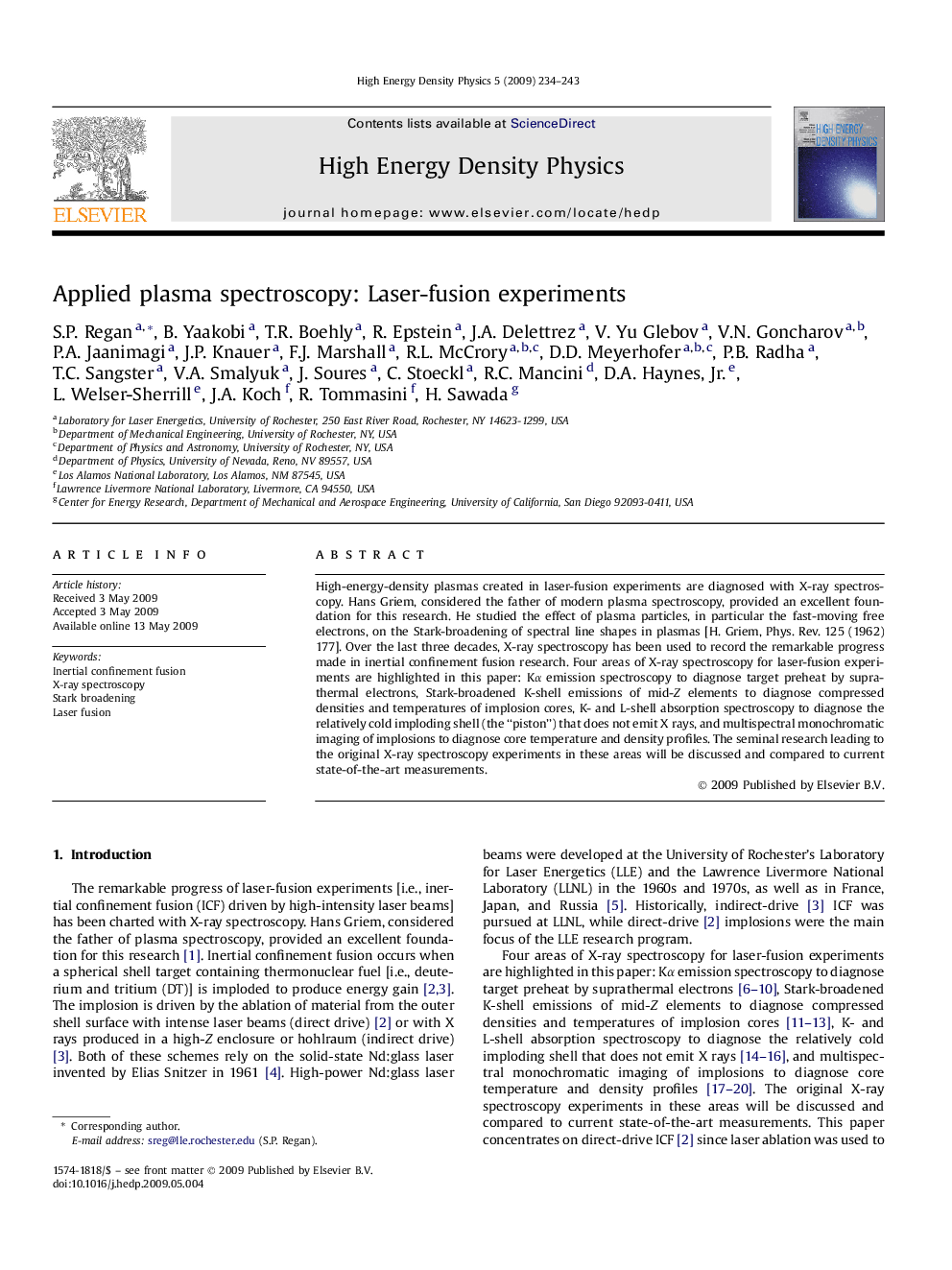| Article ID | Journal | Published Year | Pages | File Type |
|---|---|---|---|---|
| 1772589 | High Energy Density Physics | 2009 | 10 Pages |
High-energy-density plasmas created in laser-fusion experiments are diagnosed with X-ray spectroscopy. Hans Griem, considered the father of modern plasma spectroscopy, provided an excellent foundation for this research. He studied the effect of plasma particles, in particular the fast-moving free electrons, on the Stark-broadening of spectral line shapes in plasmas [H. Griem, Phys. Rev. 125 (1962) 177]. Over the last three decades, X-ray spectroscopy has been used to record the remarkable progress made in inertial confinement fusion research. Four areas of X-ray spectroscopy for laser-fusion experiments are highlighted in this paper: Kα emission spectroscopy to diagnose target preheat by suprathermal electrons, Stark-broadened K-shell emissions of mid-Z elements to diagnose compressed densities and temperatures of implosion cores, K- and L-shell absorption spectroscopy to diagnose the relatively cold imploding shell (the “piston”) that does not emit X rays, and multispectral monochromatic imaging of implosions to diagnose core temperature and density profiles. The seminal research leading to the original X-ray spectroscopy experiments in these areas will be discussed and compared to current state-of-the-art measurements.
